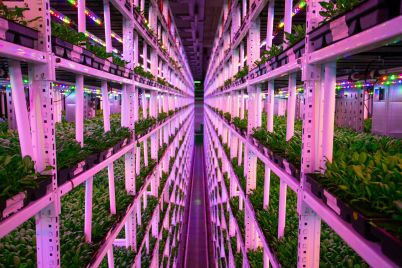Thanks to a new approach developed at the University of Surrey, it has been found that Artificial Intelligence (AI) could soon become more energy-efficient and faster.
Taking direct inspiration from biological neural networks of the human brain, researchers from Surrey’s Nature-Inspired Computation and Engineering (NICE) group have shown that mimicking the brain’s sparse and structured neural wiring can significantly improve the performance of artificial neural networks (ANNs) – used in generative AI and other modern AI models such as ChatGPT – without sacrificing accuracy. This study has been published in Neurocomputing.
This method, called Topographical Sparse Mapping (TSM), rethinks how AI systems are wired at their most fundamental level.
Unlike conventional deep-learning models – such as those used for image recognition and language processing – which connect every neuron in one layer to all neurons in the next, wasting energy, TSM connects each neuron only to nearby or related ones much like how the brain’s visual system organises information efficiently. This natural design allows the model to eliminate the need for vast numbers of unnecessary connections and computations.
Enhanced Topographical Sparse Mapping (ETSM) is an enhanced version, that goes a step further to this. This method introduces a biologically inspired “pruning” process during training – similar to how the brain gradually refines its neural connections as it learns – and together, these approaches allow AI systems to achieve equal or even greater accuracy while using only a fraction of the parameters and energy required by conventional models.
Senior Lecturer at the University of Surrey’s School of Computer Science and Electronic Engineering, and project supervisor, Dr Roman Bauer, said: “Training many of today’s popular large AI models can consume over a million kilowatt-hours of electricity, which is equivalent to the annual use of more than a hundred US homes, and cost tens of millions of dollars. That simply isn’t sustainable at the rate AI continues to grow. Our work shows that intelligent systems can be built far more efficiently, cutting energy demands without sacrificing performance.”
Using this enhanced model achieved up to 99% sparsity – meaning that it could remove almost all of the usual neural connections – but still matched or exceeded the accuracy of standard networks on benchmark datasets. With this method avoiding the constant fine-tuning and rewiring used by other approaches, it trains faster, uses less memory and consumes less than one per cent of the energy of a conventional AI system.
Mohsen Kamelian Rad, a PhD student at the University of Surrey and lead author of the study, said: “The brain achieves remarkable efficiency through its structure, with each neuron forming connections that are spatially well-organised. When we mirror this topographical design, we can train AI systems that learn faster, use less energy and perform just as accurately. It’s a new way of thinking about neural networks, built on the same biological principles that make natural intelligence so effective”
While the current framework applies the brain-inspired mapping to an AI model’s input layer, extending it to deeper layers could make networks even leaner and more efficient. The research team is also exploring how the approach could be used in other applications, such as more realistic neuromorphic computers, where the efficiency gains could have an even greater impact.













